Supervisor: Dr Mark Edmonds Probing the electronic bandstructure of Kagome metals and superconductors The Kagome lattice TmXn (T: Fe, Mn, Co and X: Sn, Ge) is a two-dimensional (2D) network of corner-sharing triangles.The unique combination of lattice symmetry, spin–orbit coupling, and unusual magnetism in this system holds great promise for future electronics and spintronics applications. When considered as an isolated layer, …
Monash: Measuring Magnetic Topological Insulators via ARPES
Supervisor: Dr Mark Edmonds Realising new intrinsic magnetic topological insulators and heterostructures for lossless transport applications at high temperature Van der Waals materials have widely varying electronic properties including topological insulator (TI) behaviour (Bi2Se3/Bi2Te3), and ferromagnetism in 2D (CrI3). However, these materials are distinct i.e. they possess topological or magnetic properties but not both. The intrinsic magnetic topological insulator MnBi2Te4 was …
Monash: Magnetic and Electronic Properties of 2D and 3D Magnetic Topological Materials
Supervisors: Drs Mark Edmonds and Julie Karel Topological materials, such as topological insulators and topological Dirac semimetals, are a new class of matter that possess new and exciting electronic properties. Allowing a wide range of new physics to be explored and have the potential to create revolutionary new electronic devices that have the potential to transport charge through one-dimensional edge modes without dissipation. Our group has made a number …
Monash: Understanding the Electronic Properties of 2D Topological Materials
Supervisors: Drs Iolanda di Bernardo, Mark Edmonds and Prof Michael Fuhrer. Topological materials, such as topological insulators and topological Dirac semimetals, are a new class of matter that possess new and exciting electronic properties. Allowing a wide range of new physics to be explored including Majorana fermions and the Chiral anomaly to creating revolutionary new electronic devices that have the …
Monash: Transport/STM of 2D topological insulators
Supervisors: Prof. Michael Fuhrer, Mark Edmonds and Dr. Iolanda di Bernardo Two-dimensional topological insulators (such as ultrathin Na3Bi, Bi2Se3, Bi2Te3, WTe2 etc.) and transition metal dichalcogenides (MoS2, WSe2, etc.) belong to a remarkable class of new materials with unique quantum mechanical properties. They possess a large spin-orbit interaction, that couples their electron momentum and spin. In the case of topological …
UNSW: Topological electronics in atomically thin materials
Generously funded Scientia PhD Scholarships are available to study topological electronics in atomically thin materials. The research project will involve the fabrication and study of 2D topological materials. In 2010, the Nobel prize in physics was awarded for groundbreaking experiments on the atomically thin two-dimensional material graphene, which Geim and Novoselov showed could be made with sticky tape! Later, in 2016 …
Monash: Light transformed materials
Supervisors: Dr Gary Beane and Dr Agustin Schiffrin Progress in condensed matter physics is often driven by the discovery of novel materials. Topological materials are one such class of material, displaying unique quantum mechanical properties. Topological insulators (TIs) are a particular class of topological materials that are the subject of ongoing intense research interest. As they arise from a qualitatively …
Monash: Growth and Characterization of 2D Topological Materials
Supervisors: Mark Edmonds and Prof Michael Fuhrer. Topological materials, such as topological insulators and topological Dirac semimetals, are a new class of matter that possess new and exciting electronic properties, allowing a wide range of new physics to be explored including Majorana fermions and the Chiral anomaly to creating revolutionary new electronic devices that have the potential to transport charge …
UNSW: Hole based quantum semiconductor devices
Supervisor: A/Prof. Alex Hamilton The spin-orbit interaction is central to topological insulators, Majorana fermions, and even the formation of artificial topological insulators from conventional semiconductors. The spin-orbit interaction couples the motion of an electron with it’s magnetic dipole moment – essentially generating an effective magnetic field that is proportional to the electron’s momentum. Galllium-Arsenide is the cleanest material system from …
UNSW: Mesoscopic devices in oxide heterostructure based 2D electron systems
Supervisor: A/Prof. Alex Hamilton The conducting interface between the two insulating oxides LaAlO3 and SrTiO3 (LAO/STO) exhibits many intriguing properties such as high mobility, a gate-tunable superconducting phase, ferroelectricity and ferromagnetism. The aim of this project, working in in close collaboration with FLEET colleagues in Materials science at UNSW, is to develop new techniques for fabricating nanoscale devices at the …
Swinburne: Floquet topological superfluidity in a 2D Fermi gas
Supervisor: Chris Vale, Paul Dyke The aim of this project is to study Floquet topological superfluidity using 2D gases of lithium-6 atoms in the vicinity of a p-wave Feshbach resonance. Experiments to date have found that gases prepared near a p-wave resonance become unstable due to inelastic losses. Recent theoretical work has identified a potential way to overcome these losses …
Swinburne: Topological superfluidity in ultracold atomic gases
Supervisor: Chris Vale, Sascha Hoinka, Carlos Kuhn The aim of this project is to produce a topological superfluid using a gas of ultracold dysprosium atoms in a quantum gas microscope. Dysprosium, with its long-range and anisotropic dipolar interactions, may provide new pathways for creating unconventional superfluids, with non-trivial topology. This project will involve working on a new experiment, currently being …
Monash: Atomic-scale structural, electronic and optoelectronic studies on light-harvesting metal-halide perovskites
Supervisor: Dr Agustin Schiffrin Hybrid organic-inorganic perovskites are an emerging class of photovoltaic materials with the potential to outperform silicon. Solar cells made of metal-halide perovskite offer material costs below $2/m2 and certified efficiencies beyond 20%. However, the underlying physical mechanisms allowing for strong light absorption and efficient electron-hole separation in metal-halide perovskites are not fully understood. In particular, very …
RMIT: Realizing high temperature quantum anomalous Hall effect in two dimensional topological insulators
Supervisor: A/Prof. Lan Wang Topological insulators are novel quantum materials discovered in recent years [1-6]. The material system has a bulk insulating state and a conducting edge state which has fascinating characteristics. Both three dimensional (3D) and two dimensional (2D) topological insulators have been experimentally realized. Two dimensional (2D) topological insulators are insulating in their interior, but support one-dimensional (1D) …
RMIT: Spin transport and spin transfer torque in heterostructures of two-dimensional materials
Supervisor: A/Prof. Lan Wang 2D materials: Dimensionality plays a crucial role in determining the fundamental properties of materials, which has already been strikingly high-lighted by the discovery of graphene [1]. Graphene has many attractive properties for electronics and spintronics, such as gate-tunable carrier concentration, exceptional high electric mobility (> 105 cm2V-1s-1 at room temperature) and long spin-diffusion length. Other novel …
Monash: Few and many-body physics in ultracold atomic gases
Supervisors: A/Prof. Meera Parish and Dr. Jesper Levinsen Ultracold atomic gases have emerged as an ideal platform for investigating the physics of strongly correlated materials in a highly controllable environment. The Theory of Quantum Matter group at Monash University works primarily at the interface between condensed matter physics and the physics of ultracold atoms. We are particularly interested in systems …
ANU: Exciton polaritons in 2D atomically thin materials
Supervisors: A/Prof. Elena Ostrovskaya and A/Prof. Andrew Truscott Atomically thin transition metal dichalcogenides represent a perfect 2D “flatland” platform for creating excitons with large binding energies and coupling them to light. Strong coupling to light and formation of exciton polaritons in open and monolythic microcavities has been very recently reported by several groups around the world. This project will aim …
ANU: Non-equilibrium quantum condensation of microcavity exciton polaritons
Supervisors: A/Prof. Elena Ostrovskaya and A/Prof. Andrew Truscott Exciton polaritons are bosonic composite particles that are part light and part matter. They are composed of photons and excitons (electron/hole pairs) forming in semiconductor microcavities in the strong light-matter interaction regime. Akin to ultracold neutral bosonic atoms, polaritons can undergo Bose-Einstein condensation. In a Bose-Einstein condensate (BEC), millions of bosons occupy …
UNSW: Electron-electron interactions in topological materials
Supervisor: A/Prof. Dimi Culcer Please contact A/Prof. Dimi Culcer at d.culcer@unsw.edu.au for further information. Interested applicants must meet UNSW PhD entry requirements. See https://research.unsw.edu.au/submit-application for more information.
UNSW: Spin-3/2 systems for fast, efficient information processing
Supervisor: A/Prof. Dimi Culcer Electrical control of spins could pave the way for scalable information platforms. The spin-orbit interaction provides a pathway towards this goal: an electric field changes the electron’s momentum and, through the spin-orbit interaction, it rotates its spin as well. Our recent work has found that certain spin bits based on spin-3/2 holes in semiconductors can be …
UNSW: Quantum transport and non-linear response in topological materials
Supervisor: A/Prof. Dimi Culcer Topological materials, such as topological insulators, Weyl semimetals, and strongly spin-orbit coupled semiconductors, have attracted considerable attention due to their potential in spin electronics and quantum computation. Recent work has revealed the presence of topological terms in their electrical response, which are generally associated with the Berry phase and lead to quantized values of e.g. certain …
Monash: Femtosecond atomic-scale dynamics on a surface
Supervisor: Dr. Agustin Schiffrin The advent of scanning tunnelling microscopy more than 30 years ago has allowed for real-space imaging of single atoms and molecules on a surface. Normally, this technique is able to study the equilibrium properties of a system, and does not allow to access real-time ultrafast dynamics occurring at femtosecond timescales. Indeed, the intrinsic time resolution of …
Monash: On-surface organic nano-electronics
Supervisor: Dr. Agustin Schiffrin Modern electronics relies on the control of electric charge in nanoscale devices. Current mass production methods for device miniaturisation are not only reaching their inherent limit, but are also facing fundamental challenges arising from quantum phenomena at the nanoscale. The design of next-generation electronic devices requires the development of radically new approaches to nanotechnology, including novel …
Monash: Modeling the electronic structure of low-dimensional organic nanostructures on surfaces
Supervisors: Dr. Agustin Schiffrin and A/Prof. Nikhil Medhekar Supramolecular and metal-organic self-assembly on surfaces holds promise for the synthesis of functional low-dimensional nanostructures with ultimate atomic-scale precision. This approach consists of depositing atoms and functionalised organic molecules onto clean surfaces, in a controlled environment, to achieve well-defined configurations via programmed inter-adsorbate and adsorbate-surface interactions. Potential functionality of these nano-assemblies arise …

